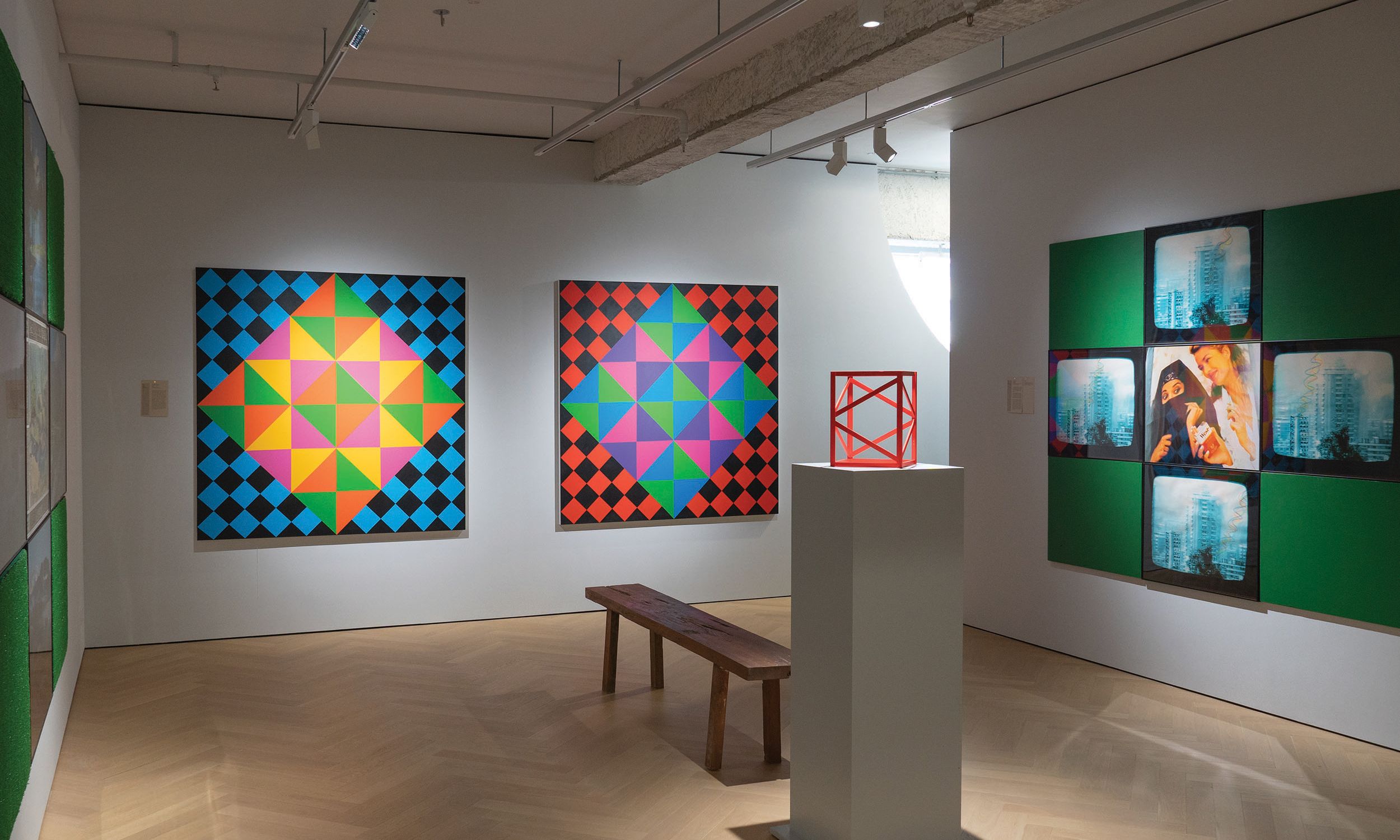Siah Armajani and Rasheed Araeen's exhibition Two Manifestos at Rossi & Rossi Wong Chuk Hang Courtesy of Rossi & Rossi
During the first year of the pandemic, a sweeping new security law and clashes on the streets of Hong Kong raised concerns among art industry insiders with connections to the city, who predicted the end of Hong Kong as an international metropolis. The restrictions that came with the city’s “zero Covid” policy did not seem to mitigate this widespread perception.
And yet, galleries and auction houses continue to proliferate in the beleaguered city. According to the latest Art Basel/UBS art market report, at least 25 new auction businesses and approximately 30 new galleries have opened in Greater China since 2020, and at least seven new art institutions have been established in 2021 in Hong Kong and Mainland China.
Among the latest to open in Hong Kong are Double Q Gallery, established by the local collector Queenie Rosita Law; Property Holdings Development Group (PHD Group), founded by former De Sarthe director Willem Molesworth and his wife, Ysabelle Cheung, the former managing editor of ArtAsiaPacific; and Odds and Ends, launched by Fiona Ho and Nathalie Ng, formerly of David Zwirner and Gallery HZ, whose doors closed at the end of 2021 (Ho also worked at the now closed gallery).
Law says an increasing global interest in Asia and a growing appetite among younger collectors in the region spurred her on to launch her gallery, which opened this month with two solo exhibitions featuring the Hungarian artist Márton Nemes and the British artist, Tomo Campbell.
“During my journey from collecting to establishing a contemporary art space in Budapest, I met rising talents from Europe and America who have really started to notice the growth and importance of the Asian art market and started asking me to showcase their works in Hong Kong,” she says.
Xin Liu and Lucia Monge's Potato Yellow Baby (2021) on show at Property Holdings Development Group Photo: Zed Leets Courtesy the artists and Property Holdings Development Group
Ho, of Odds and Ends gallery, believes the “multitude of misfortunes” Hong Kong has suffered the past few years has culminated in “a cultural shift” resulting in “an increased circulation and commercial consumption of contemporary art due to a renewed sense of urgency in channelling and preserving our lived experience through art”.
Charles Fong, the director of Rossi & Rossi, a mainstay gallery in Hong Kong which recently returned to its old stomping grounds in the city’s Wong Chuk Hang district, agrees: “Due to the slowdown globally, many buyers and collectors in Hong Kong are now looking to the local art community for a new perspective. That’s why there are galleries opening here and why there seems to be more of a focus on the local and regional.”
The past few years has seen a slew of commercial and independent art spaces launching in Hong Kong such as Square Street Gallery in Sheung Wan, which opened in April 2021, and The Shophouse, which was established in May 2020. Additionally, grass-roots projects have sprung up including A’Fair, whose inaugural edition in December was held in a vacant shop in Wan Chai. Rising rents remain a problem in the metropolis so alternative spaces are frequently sought out.
Overall, there seems to be a consensus that the city’s turbulent times has allowed artists, dealers and even collectors a moment to reflect, and that intense reflection has lead to definitive action.
Peter Chan’s oil painting Study for Reunion (2022) from Odds and Ends gallery’s current group exhibition, Something Blue, which runs until 29 May Courtesy of the artist and Odds and Ends
However, not all have felt safe enough to remain in Hong Kong. The local artist Kacey Wong left for Taiwan in August 2021, saying it was “too dangerous to stay” as the Chinese government continued to target critics. More recently, the last remaining British judges resigned from Hong Kong’s Court of Final Appeal, saying the administration had “departed from values of political freedom and freedom of expression”. The Chinese government’s persecution of its Uyghur population remains an enormously problematic issue, though is often overlooked in art world circles.
Indeed, Hong Kong is still very much considered a prominent geographic and economic gateway to mainland China with its rapidly growing contemporary art market. Hong Kong also benefits from having no taxes on art imports as well as wealth, gift, estate or capital gains tax, in contrast to neighbouring cities.
As such, it continues to flourish as a hub—and major players are following the money. Last year, Christie’s announced plans to move into expansive new Asia headquarters in Hong Kong in 2024, while rival auction house Phillips will move to its new Asia head offices in the West Kowloon Cultural District in the autumn, next to the new M+ museum.

